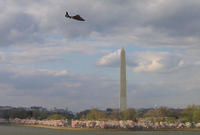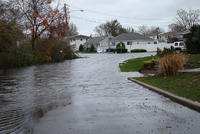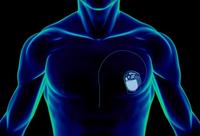-
Improving cities by using the notion of “urban metabolism”

As is the case with organisms, cities need energy, water, and nutrients, and they need to dispose of wastes and byproducts in ways which are viable and sustainable over the long run. This concept of “urban metabolism” is a model for looking systematically at the resources that flow into cities and the wastes and emissions that flow out from them in order better to understand the environmental impacts of cities and to highlight opportunities for efficiencies, improvements, and transformation.
-
-
Personal genetic information vulnerable to hacking
Using only a computer, an Internet connection, and publicly accessible online resources, a team of researchers has been able to identify nearly fifty individuals who had submitted personal genetic material as participants in genomic studies.
-
-
Flu virus can tell time
The flu knows how much time it has to multiply, infect other cells, and spread to another human being before the immune system kills it. The discovery of the flu virus’s timing mechanism gives scientists the ability to reset the virus’s clock and combat it in more effective ways.
-
-
Tires shipped from Arizona to a U.K. contained black widow spiders

Two shipments of tires from an Arizona company to a U.K.-based client contained dozens of deadly Black Widow spiders; it appears that the spiders nested in the tires in Arizona, and hatched a brood of young spiders while the shipment was on its 5,000-mile journey to England.
-
-
Helicopter monitors radiation levels in Washington, D.C.

For the last week, a National Nuclear Security Administration (NNSA) helicopter has been flying over Washington, D.C., measuring naturally occurring radiation levels; the purpose is to establish a baseline of radiation levels so that abnormal spikes – occurring, for example, as a result of exploding a dirty bomb — may be readily detected
-
-
New strategy for bacteria antibiotic resistance
Scientists used microfluidics to observe the behavior of individual tuberculosis-like bacteria in the presence of antibiotics; their observations call into question the prevailing theory of bacterial resistance, and they have proposed a new explanation for why some bacteria become resistant
-
-
Hydrogen peroxide vapor kill superbugs dead
Infection control experts at the Johns Hopkins Hospital have found that a combination of robot-like devices that disperse a bleaching agent into the air and then detoxify the disinfecting chemical are highly effective at killing and preventing the spread of multiple-drug-resistant bacteria, or so-called hospital superbugs
-
-
The burden of disease links ecology to economic development and growth
According to conventional economic wisdom, the foundation of economic growth is in political and economic institutions; researchers argue that, in fact, vector-borne and parasitic diseases have substantial effects on economic development across the globe, and that these diseases are major drivers of differences in income between tropical and temperate countries; the burden of these diseases is, in turn, determined by underlying ecological factors: it is predicted to rise as biodiversity falls
-
-
Natural defense against malaria identified
One of the world’s most devastating diseases is malaria, responsible for at least a million deaths annually, despite global efforts to combat it; researchers have identified a protein in human blood platelets that points to a powerful new weapon against the disease
-
-
Antibiotics based on a new principle may defeat MRSA, TB
Scientists at Karolinska Institutet have presented a new principle for fighting bacterial infections, in other words, a new type of antibiotic; the new antibiotic mechanism is based on selectively blocking the thioredoxin system in the cells, which is crucial to the growth of certain bacteria; scientists hope to be able to treat such conditions as stomach ulcers, TB, and MRSA
-
-
New, quick way to ID people exposed to dirty bomb, radioactive radiation
Research conducted by scientists from the Berkeley Lab could lead to a blood test that detects if a person has been exposed to radiation, measures their dose, and separates people suffering from inflammation injuries — all in a matter of hours
-
-
EPA issues new soot pollution standard over industry’s objections
The Environmental Protection Agency (EPA), acting under court order, on Friday issued a new standard for soot pollution; the agency estimates the cost of complying to be between $53 million and $350 million – and the estimated benefits to be between $4 billion and $9 billion; utilities, manufacturers, chemical companies, and the oil and gas industry asked for a delay in issuing the rule, arguing it would be costly to implement
-
-
Sandy exposes weaknesses of antiquated sewage systems in N.Y., N.J.

Hurricane Sandy destroyed homes, apartments, and entire communities, and it also exposed the outdated sewage systems in New York and New Jersey; since Hurricane Sandy, millions of gallons of raw sewage have infiltrated waterways in both states, and it could take several years and billions of dollars to fix the systems; New York governor Andrew Cuomo estimated that it will cost about $1.1 billion to repair treatment plants; officials in the field say that much more will have to be done
-
-
Engineers awarded $2.2 million grant for research on new toilet design
A University of Toronto engineering team has received a major grant from the Bill and Melinda Gates Foundation to continue work on designing for a waterless, hygienic toilet that is safe and affordable for people in the developing world
-
-
Pacemakers, other implanted devices, vulnerable to lethal attacks

IT experts reported that security flaws in pacemakers and defibrillators could be putting lives at risk; the experts say that many of these devices are not properly secured and therefore are vulnerable to hackers who may want to commit an act that could lead to multiple deaths
-
More headlines
The long view
We Ran the C.D.C.: Kennedy Is Endangering Every American’s Health
Nine former leaders of the Centers for Disease Control and Prevention (CDC), who served as directors or acting directors under Republican and Democratic administrations, serving under presidents from Jimmy Carter to Donald Trrump, argue that HHS Secretary Roert F. Kennedy Jr. poses a clear and present danger to the health of Americans. He has placed anti-vaxxers and conspiracy theorists at top HHS positions, and he appears to be guided by a hostility to science and a belief in bizarre, unscientific approaches to public health.
